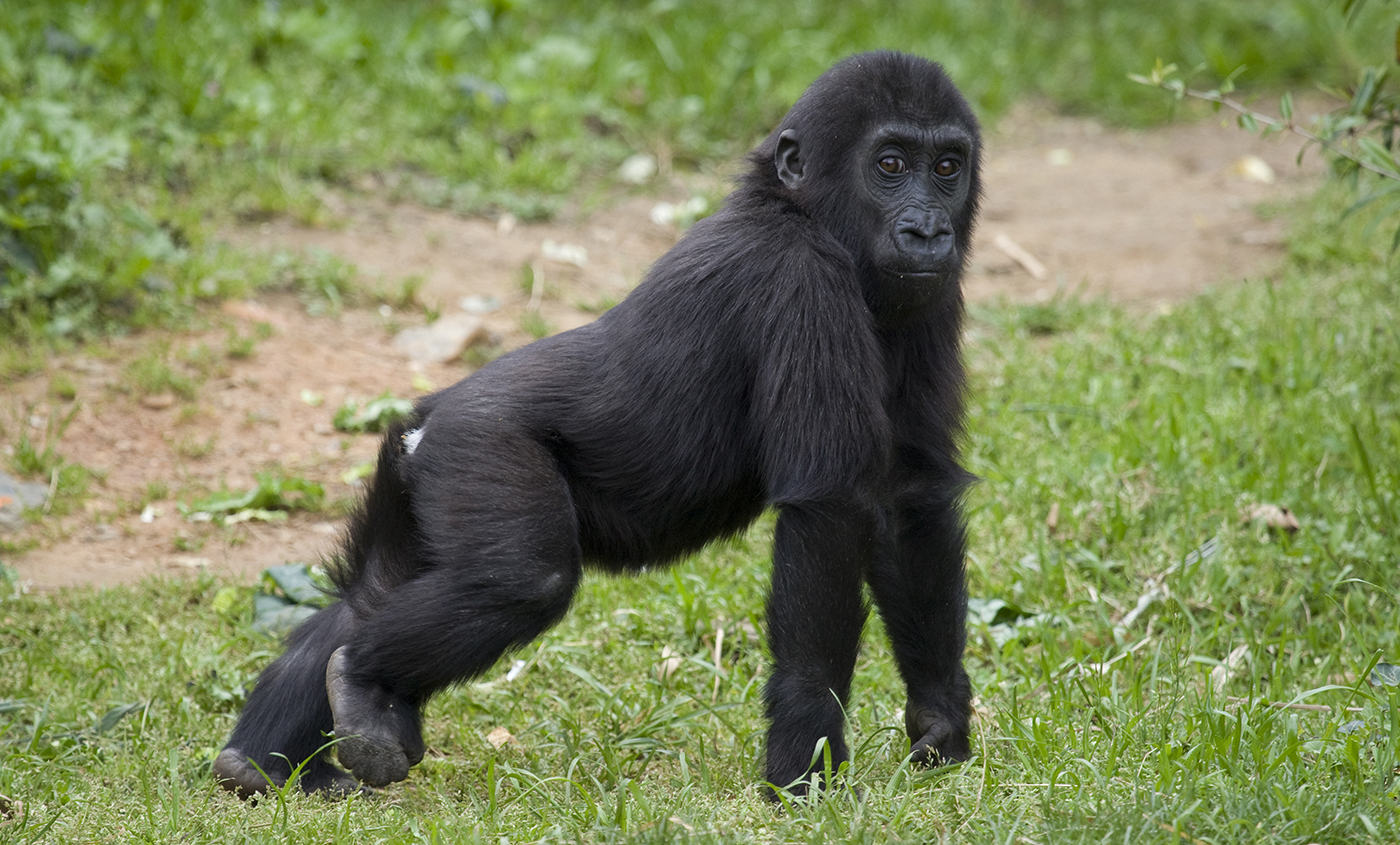
Nesting, Behavior and Social structure of Western lowland gorillas On average, Western lowland gorillas move for about 4 kilometers every day in search of food.

They don’t have to move far away in search of food like other primates since lost forest and vegetation cover grow rapidly. An adult western lowland gorilla can eat up to 18 kilograms of food in a day. Some of the food eaten are staple foods while others are consumed depending on the season of the year and shifting rains. Their diet is mostly made of shoots, fruits, pulp, wild berries, tree bark and roots. Adults use the midday rest to take a nap while the young paly among themselves. Lowland gorillas are primarily herbivorous primates and spend most of the day eating with only one break at midday. Feeding habits of Western Lowland gorillas The level of intelligence of an adult gorilla is thought to be at the same level as that of a human child.

They have shown a remarkable ability to understand simple sign language while in captivity. They can turn all sorts of materials into tools to help them get food or even measure the depth of a river before crossing. Western Lowland gorillas are highly intelligent primates. Male gorillas can also be distinguished by the silver hair on their back. Rough hair covers their whole body except for the hands, feet, ears and face. Like all gorilla subspecies, they have no tails. Although they weigh about the same size as an adult male human, gorillas are seven times stronger. A male silverback can reach 5 feet and 1 inches when standing erect. Silverback gorillas display great charisma and a sense of intelligence. Gorilla groups are led by a dominant Silverback. Western lowland gorillas are very social primates that depend on their group to thrive. They have been known live up to 40 years in the wild and 60 in captivity. They may be the smallest of all the gorilla subspecies, but an adult can weigh up to 270 kilograms in the wild and more in captivity. Almost all gorillas found in captivity or zoos are western lowland gorillas.

Most Western lowland gorilla populations are found in the forests of the Republic of Congo. Western lowland gorillas are found in the swamps and forests of central Africa – Gabon, Republic of Congo, Central African Republic, Equatorial Guinea, Angola and Cameroon. Western lowland gorillas survive well in captivity and over 550 individuals are found in zoos around the world. It is believed the over 360,000 western lowland gorillas live in the vast swamps and forests of West and Central Africa.


 0 kommentar(er)
0 kommentar(er)
